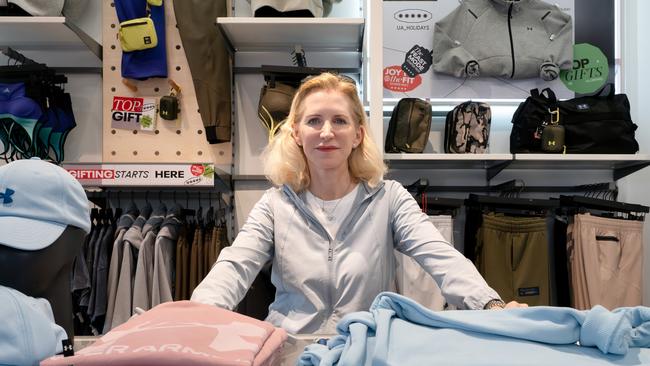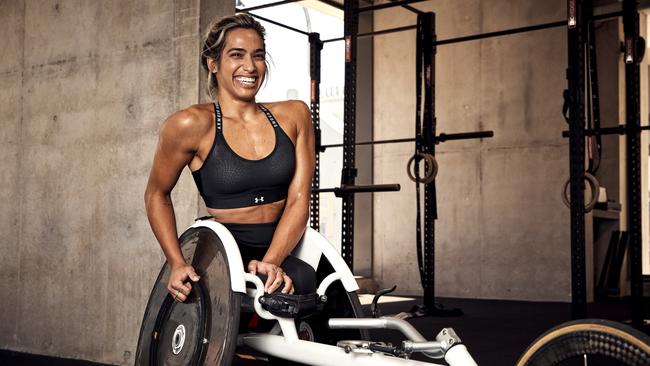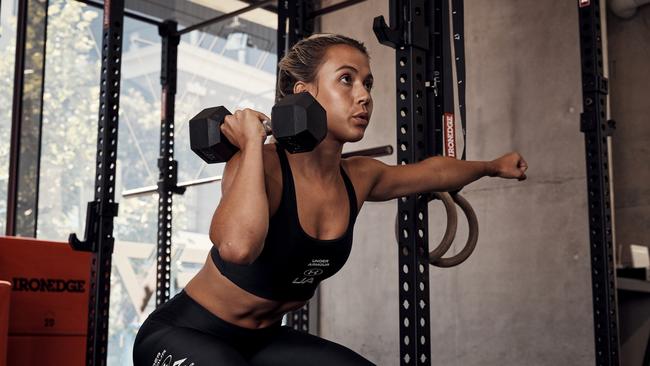The new CEO of sportswear brand Under Armour wants a greater share of female consumers
Under Armour has a reputation as a strong exercise and fitness brand for men. Its new chief, Stephanie Linnartz, wants to change that.

Stephanie Linnartz spent almost 30 years as a hotels industry executive, where she walked the floors, lobbies and suites of some of the world’s best hotels to gauge what customers actually wanted.
If you listen long enough, close enough, they will tell you.
And so when Linnartz became the chief executive of sportswear and apparel brand Under Armour this year, following a hotels career that included a stint as president of Marriott International, the world’s largest hospitality company, she came in running with plenty of ideas from what she had seen out in the real world.
Under Armour had a problem that was, of course, also a huge opportunity – a major gender imbalance in which almost three out of four of its customers were men.
This was offset by its reputation in the fitness community, where Under Armour was viewed as a leader in sportswear innovation, selling the kind of clothing and running shoes that helped people exercise harder, better and faster.
Linnartz needed to find out “what women want”.
What she observed, and she wasn’t alone, was that women were not just wearing their exercise clothes in the gym or yoga studio but when out shopping, meeting friends or doing the school runs. It meant traditional sportswear – which placed the importance of performance over look – had to change if it wanted to capture women shoppers.
“We are seeing that globally. It is the intersection of performance and style – so finish, trim, colour – and I do believe the way we will appeal to female consumers globally is leaning into sports style,” said Linnartz, whose Under Armour company is based in Baltimore, US, after a tour of her operations here.

“And not just women, men too. Post-Covid in particular there has been a move towards casual apparel in the workplace, not just when you are at the gym. There is just more of a trend to casual apparel and more sportswear apparel, and sneakers are a big part of that. It’s a global trend and a male/female trend and it bodes very well for our company because that is the space we are in.”
For Under Armour, which made its name in the late 1990s with a simple white T-shirt nicknamed “the shorty” that dispersed sweat faster than anything else on the market, had to change. Under Armour has annual sales of almost $US5.9bn ($8.85bn) and is throwing off substantial growth for a fashion and apparel company, but there was a sense it could do more for its customers than just help them run faster.
“I always like to say that, without beauty, there is no performance,” said Linnartz. “And so how do we make things more fashionable and beautiful and at the same time very performance oriented and functional?
“We have an amazing history of innovation at Under Armour, innovating around sport, fabric, footwear. We do amazing things for athletes globally to make them better at sport, that is still very much the core of our business, and simultaneously lean more into sports style.”
Linnartz has also been a director since 2018 of the $US325bn US hardware giant Home Depot.

After only a few months at the CEO’s at Under Armour, she hired one America’s most successful and respected fashion designers to come work for her.
“We hired a new head of design, John Varvatos, who is a well known global designer working with Polo Ralph Lauren and Calvin Klein,” Linnartz said. “
He also worked for Converse, so he does have experience in sport, and he will be building out his team globally to deliver on this focus we have of elevated product and design.”
Under Armour has aligned itself with high-profile athletes as part of this quest to communicate to women, sending out a dual message about fashion and functionality.
“So we play in sportswear, footwear and apparel and at this moment our business actually skews more male than female, and a big area of focus is to grow our business with women,” Linnartz said.
She wants Under Armour to have a greater “share of closet” of female customers. “Our goal is to be able to open the aperture of what we sell to consumers, to get more share of wallet and more share of closet,” she said.
“We believe the path to doing that is through making better, best, premium products, more sports style and more footwear.
“One of the biggest ‘unlocks’ for our company is to do more in the footwear and sneaker space, but as we focus on sports style we are going to get more share of that closet. Seventy-five per cent of our customers are male and 25 per cent women, so that’s our split, but there’s no reason we can’t push towards a 50/50 split. But we have a way to go. We want to get a more balanced business.”
Helping this goal is Under Armour’s growing list of brand ambassadors, such as Australian wheelchair racer Madison De Rozario, basketball player Cayla George, former Matildas player Chloe Logarzo, Western Sydney Wanderers’ Angelique Hristodoulou and AFL player Nicola Stevens.

While in Australia Linnartz met with one of her biggest customers, sports chain Rebel, where managing director Gary Williams said Under Armour continued to grow in popularity with his customers.
“Our exclusive brand relationship with Under Armour stretches back a decade and is growing stronger every year,” he said.
“Having significantly expanded its range to cover everything from footwear, apparel and electronics, Under Armour is building momentum in the Australian market … it has also has established partnerships with elite teams including the Essendon Bombers and Sydney FC.”
When in Australia, Linnartz tossed the coin at the Sydney game against Perth Glory.
The alignment with women’s sports is following a popular playbook of many clothing companies. The take-up of women’s sports is growing, especially in the wake of the Matildas’ success at the FIFA Women’s World Cup.
“I’m very passionate about women in sports and of course professional athletes and the Women’s World Cup was great for female sports, it was great for Australia, as Australia did so well. So that was wonderful to see,” Linnartz said. “I believe this idea of youth sports and grassroots sports is super important, and particularly for young girls. This is another global phenomenon that a lot of girls play sports when they are littler but then they drop out when they get to high school and even more drop out when they go to university.
Linnartz said Under Armour needed to “win the hearts and minds” when women were young as well as support something their development. “So there’s all sorts of research that shows that kids who play sports have higher self-esteem, learn leadership skills, and less depression, are more likely to go to university or get an advanced degree,” she said. “So there’s so many benefits of sport, even if you’re not going to end up being a professional athlete.”

But for Linnartz. this won’t come at the expense of her male customers: “We really win with the male consumer, and we don’t want to lose that. As we do a better job to win more share of closet from women, we will not take the eye off the ball as it relates to our male consumer. We can do both.”



